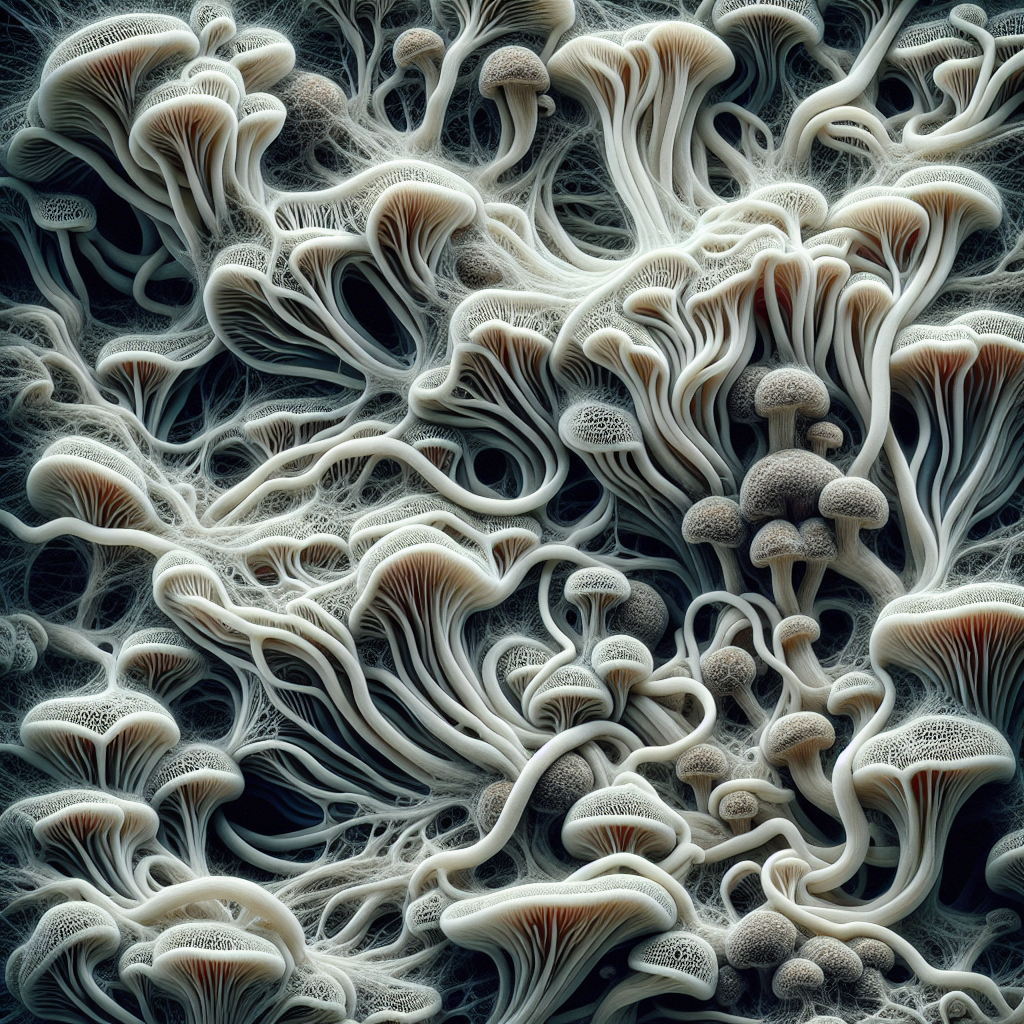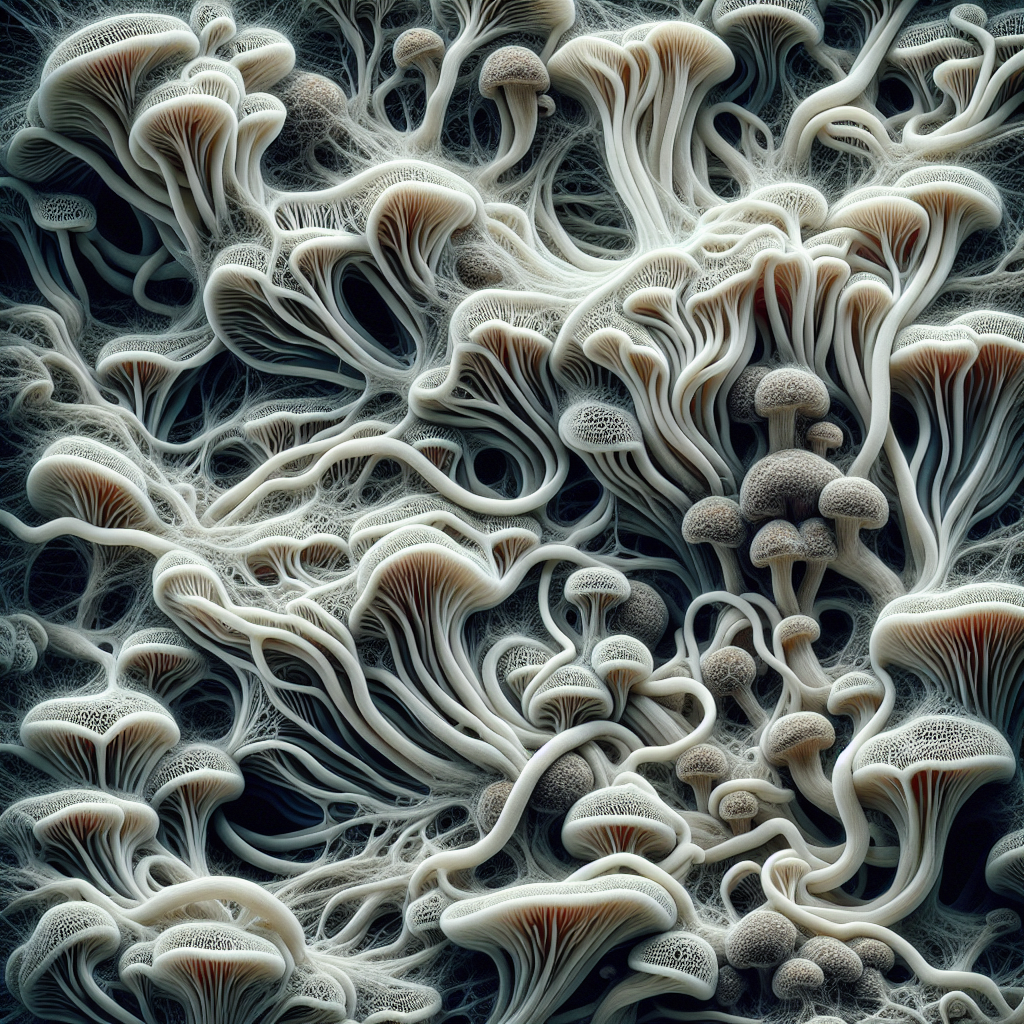“Understanding Mycelium Growth Day by Day” is an in-depth exploration of the fascinating life cycle of mycelium. In this article, you will follow the amazing journey these complex networks of fungus embark upon, examining the intricacies of their daily progress. From their humble beginnings to their maturity, the details documented in this piece will illuminate the highly specialized nature of mycelium growth alongside the factors affecting it, providing you with a comprehensive knowledge of these intriguing organisms.
Understanding Mycelium
Mycelium is a crucial component within the ecosystem and serves as the vegetative part of fungi. It plays a key role in breaking down organic matter, nutrient cycling, soil structure enhancement and has several implications for human use. This article aims to give you a comprehensive understanding of mycelium and its growth.
What is Mycelium?
Mycelium is the thread-like vegetative structure of fungi (called hyphae) that exists primarily beneath the soil or growing media. It plays a critical role in the life cycle of fungi, enabling it to absorb nutrients from its environment, reproduce, and develop into a fruit body (such as a mushroom). Mycelium also serves as a fungal colony, forming a vast network that can span across large areas.
The Role of Mycelium in the Environment
Mycelium plays a significant role in ecological processes, such as nutrient cycling and soil aggregation. By breaking down complex organic matter into simpler forms, mycelium helps enrich the soil with nutrients like nitrogen, phosphorus, and potassium. Furthermore, the interweaving of mycelial hyphae binds soil particles together, enhancing its structure and water retention capacity.
Important Characteristics of Mycelium
Numerous, resilient, and adaptive are key attributes of mycelium. This fungal network has the capacity to penetrate even the hardest of substances, be it rocks or tree bark. Its resilience allows it to survive under harsh conditions, and it quickly adapts by changing its growth pattern in response to variations in the environment. It also has a unique ability to communicate and transfer nutrients across vast distances.
The Life Cycle of Mycelium
Understanding the life cycle of mycelium can aid in comprehending its growth process, which includes spore formation, germination, growth, and reproduction.
Origins and Formation of Mycelium
Mycelium originates from fungal spores, microscopic entities that are germinated under favourable conditions. The process of germination involves the spore absorbing water and nutrients and forming a tube-like structure called a germ tube, which eventually develops into hyphae.
Growth and Development of Mycelium
The hyphae grow by extending their tips, resulting in a network of mycelial filaments. This network is capable of covering large areas, often invisible to the naked eye. It absorbs nutrients from the environment, sustains the growing fungus, and prepares for reproduction.
Reproduction in Mycelium
Mycelium reproduces through the formation of fruit bodies. As nutrients accumulate and environmental conditions become favorable, the mycelium undergoes cellular changes that lead to the production of a fruit body, like a mushroom, which contains the reproductive spores.

Day 1 of Mycelium Growth
The onset of mycelium growth is a crucial phase, and it primarily involves spore germination and the initiation of hyphal growth.
Spore Germination
Under optimal conditions of temperature, humidity, and nutrient availability, fungal spores start germinating by absorbing water and nutrients and forming germ tubes.
Hyphal Growth Initiation
This is followed by the growth of the germ tube into hyphae, which forms from the spore’s outer cells and extends into a network of filaments.
Connection Formation
Eventually, hyphae from different spores or from the same spore merge, thus forming connections and initiating the mycelial network.
Day 2 to Day 5 of Mycelium Growth
This phase is characterized by expansion of the mycelial network and absorption of nutrients.
Interlocking Hyphae
The hyphal strands continue to grow and intertwine with each other creating an interlocking structure which strengthens the mycelium network.
Creation of Mycelial Networks
At this stage, the mycelium network starts to become visible as a white or cream-coloured mass in the growing medium.
Nutrient Absorption
Simultaneously, the mycelium absorbs nutrients from its surrounding environment, aiding its growth and preparing it for fruit body formation.

Day 6 to Day 10 of Mycelium Growth
This period involves the formation of fruit bodies and increased network complexity.
Formation of Fruit Bodies
As nutrients accumulate, mycelium initiates the process of fruit body formation, which enables it to reproduce.
Preparation for Sporulation
The mycelium prepares the fruit bodies for sporulation, the process of releasing spores as a means of reproduction.
Increasing Network Complexity
During this time, the mycelium network also increases in complexity, becoming denser and expanding further.
Beyond Day 10 of Mycelium Growth
At this point, mycelium matures and goes into a state of continual growth and reproduction.
Maturation of Fruit Bodies
Existing fruit bodies mature and new ones continue to form, awaiting the right conditions to release spores.
Release of Spores
Under suitable conditions, mature fruit bodies release spores, which germinate and form a new generation of mycelia.
Continued Expansion of Mycelial Network
Simultaneously, the mycelial network continues to expand, absorbing nutrients and aiding in the growth of existing and new fruit bodies.
Factors Influencing Mycelium Growth
Several factors can significantly influence mycelium growth, including temperature and humidity, substrate nutrients, and presence of competing organisms.
Temperature and Humidity
Mycelium growth is highly dependent on temperature and humidity levels. Optimal growth generally occurs in warm and moist conditions.
Nutrient Available in the Substrate
Mycelium absorbs nutrients from its substrate to sustain growth and development. A nutrient-rich substrate can significantly impact the growth rate of mycelium.
Presence of Competing Organisms
Mycelium competes with other organisms, including bacteria and other fungi, for nutrients and space. The presence of competitors can influence its growth.
Observing and Measuring Mycelium Growth
Keeping track of the growth of mycelium is essential to ascertain its health and progression.
Visible Signs of Mycelium Growth
Visible signs of growth include the formation of a white or cream-colored mycelial network, development of fruit bodies, and release of spores.
Analyzing Mycelial Expansion
You can track the rate of expansion of the mycelial network over time using measures such as surface area covered, number of connections, etc.
Assessing Mycelium Health
Analyzing color, texture, and other morphological features can help evaluate the health of the mycelium.
Potential Issues in Mycelium Growth
Like any living organism, mycelium can also face certain growth problems – diseases, pests, and environmental stressors being the most common ones.
Common Diseases and Pests
Numerous fungal diseases and pests can damage the mycelium, affecting its growth or even causing death.
Effects of Environmental Stressors
Environmental stressors, such as extreme temperatures, drought, or excess water, can also hinder the growth of mycelium.
Solutions for Growth Problems
Timely identification and intervention can help address these issues. Correcting environmental conditions, supplying required nutrients, or using biocontrol agents are some of the potential solutions.
The Importance of Mycelium Growth for Humans
Mycelium has immense importance for human beings, providing benefits in areas such as food production, medicinal use, and environmental conservation.
Mycelium in Food Production
Mycelial fruit bodies, primarily mushrooms, have high nutritional value and form an important part of human diet worldwide.
Potential Medicinal Uses of Mycelium
Studies have suggested potential medicinal uses of mycelium, including its role in boosting immunity, lowering cholesterol levels and potential antimicrobial properties.
Mycelium in Environmental Conservation
Mycelium also has implications for environmental conservation. It plays a key role in soil health by improving its structure and nutrient content and has potential for use in bioremediation.
In conclusion, mycelium represents an industrious network of fungal hyphae, integral to ecological processes, key in several human practices and prolific in growth under favorable conditions. Understanding the day-to-day growth of mycelium enhances our knowledge about this vital organism providing insights into its potential applications and management strategies.
